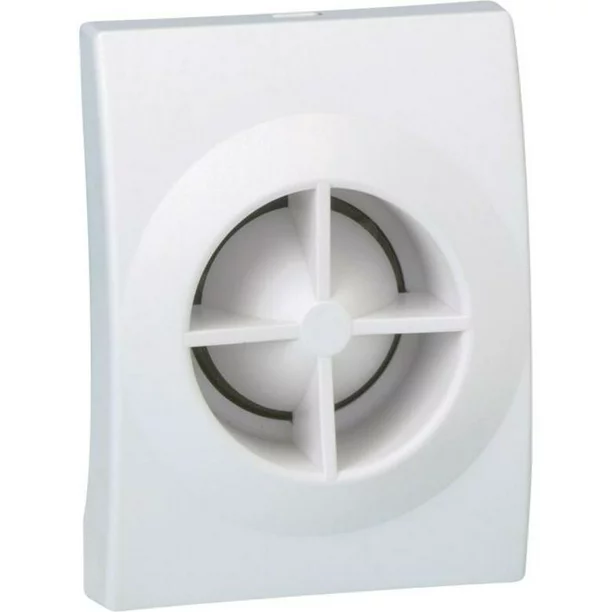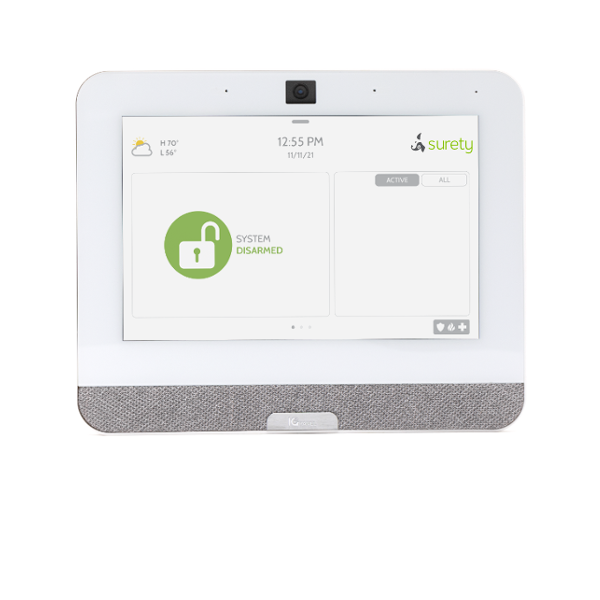As a complete security integrator, we’ve long touted burglar alarms as one of the most powerful forms of security. These systems create a blaring onsite response to an activation. If monitored, they also create a central station response that can lead to a police dispatch if necessary. The combination of an immediate onsite notice to a breach and a visit from the authorities makes installing a burglar alarm a great decision for any property owner. Of course, the siren response that your alarm creates should achieve a couple goals. First and foremost, you’ll want to scare the thief to the point where they flee the premises. Additionally, you also want to alert anyone onsite or even in the area to the danger. In this post, we share your burglar alarm siren options so you can see how we can make this happen.
First, we’ll explain the installation of traditional hardwired alarm sirens. From there, we’ll see how we can now add sirens without spending time running wiring to each new siren location. Then, we’ll share the importance of installing outdoor sirens in certain applications. Our final two sections will both cover non-traditional types of alarm sirens. Specifically, we’ll check out sirens included inside alarm panels instead of installed separately. Finally, we’ll review how you can receive notifications of an alarm activation remotely! Now, let’s dive in with a review of traditional, hardwired sirens.

Traditional alarm sirens, such as this model by Honeywell, require us to hardwire each siren back to the alarm’s main control unit.
Hardwired Sirens
If you’ve read any of posts explaining different types of alarms, you’ve read about traditional, hardwired security systems. As an overview, these alarms include a control panel, usually installed in a basement. This panel has a computer board inside of it, and we run all alarm wiring back to this board. Even in slightly more modern alarms that allow for some wireless sensors, we still often have to hardwire both alarm keypads and sirens. In many systems, we install sirens above keypads for this reason. Doing so allows us to make one wire run with two wires — one each for the keypad and siren. This greatly cuts down on the time it takes to get your sirens installed.
For most homes and some small businesses, one siren provides sufficient notive for the property. However, some spaces should have more then one siren installed. Occasionally, we can still wire up sirens to these locations based on where we want to install them. Unfortunately, multi-story properties or applications without unfinished basements can make it difficult to install multiple sirens. In these instaces, we seek to install sirens that do not require a hardwired connection to the alarm panel. Let’s now take a moment to focus on these important security devices.
Wireless Siren Options
While not every alarm system comes with the capabilty to add wireless sirens, we prefer installing alarms that can utilize this valuable technology. These sirens commnunicate back to the panel using a radio frequency, in much the same manner as a wireless alarm contact such as a door sensor would. Sometimes, we plug these sirens in to a power source, allowing them to stay in service with no interruptions. In other instances, we install battery-operated sirens. These devices generally utilize long-lasting lithium batteries for their power. This latter solution works great in applications with no recourse for running wires or for plugging a siren into an outlet. Both hardwired and wireless sirens generally get installed indoors in the applications we work in. However, we also have burglar alarm siren options for exterior alarm notification as well. Let’s review these options now!
Exterior Sirens
In some instances, our customers care as much about creating an external siren response as internal one. For these customers, we offer weather-rated, outdoor sirens for exterior alarm notification. Homes in suburban areas and large businesses make great applications to add exterior sirens. These sirens often spook burglars before they even breach your property. Moreover, they also alert neighboring homes and businesses to a potential break-in. In some instances, these sirens also contain a flashing strobe light to add even more security. This strobe can help light up your property during attempted crimes at nighttime and make a thief’s retreat even faster. Just as importantly, they also show the authorities where to go when responding to an alarm. So far, the sirens we’ve looked at must connect to an alarm in some manner. Next up, we’ll check out alarms that have sirens included within the panel itself!

The QOLSYS IQ Panel 4 combines your alarm’s panel, keypad, and siren all in one easy-to-install unit!
Sirens Included in Alarm Panels
Modern alarm panels have quite a few features not included in traditional panels. For starters, these systems, such as our preferred QOLSYS IQ Panel 4, are completely self-contained. By this, we mean that the panel, keypad, and siren all come in one compact unit. This effectively eliminates the need to run wiring for a siren or install a wireless siren on the premises in most instances. However, if customers desire, we can still install secondary wireless sirens onsite. These all-in-one security systems make for an extremely efficient alarm installation. Moreover, they also generally create an intuitive, touchscreen-poweerd, user-friendly experience. Finally, some of these systems, including our QOLSYS panels, also include a cellular dialer capable of interactive cellular alarm monitoring, right out of the box. For help understanding alarm notifications associated with this option, just keep reading!
Non-Siren Alarm Activation Notifications
When we install a monitored security system, we prefer to use a cellular dialer for the alarm monitoring. Traditional security monitoring involves tying your property’s phone line to your alarm to communicate with our central station. Our cellular dialer, powered by Alarm.com, uses a cellular network instead. Therefore, if your phone lines fail — or if they get cut by a smart burglar — your alarm will stay monitored with no interruptions.
In addition to this important feature, our Alarm.com customers can also experience interactive security monitoring! Interactive monitoring services give you the ability to arm and disarm your security system remotely using the Alarm.com smartphone app. Additionally, they also let you create important alarm notifications that get sent straight to your phone. For example, we always set up Alarm.com users with alerts for alarm activations. This means that even if you are out of earshot of your sirens, you’ll still know about an alarm event the second it happens. The combination of reliable security monitoring, remote security system control, and instant alarm-related alerts make interactive cellular monitoring our most effective and popular monitoring option.
Finding the Burglar Alarm Siren Options That Work for You
We hope that this post helps you understand your burglar alarm siren options. Additionally, we also encourage you to contact us with any questions this post may raise for you. We will happily answer any and all of your security-related inquiries. Moreover, we also invite you to take advantage of our free site survey program. We offer complimentary security site walkthroughs and equipment quotes to both new and existing customers alike. While on site, we can address any existing security concerns that you may have. Furthermore, we can also make recommendations of our own based on our observations of your property.
Perhaps you have an alarm in place, but want to add some of the siren options described here. Or, maybe you have yet to install a security system, and want to design a new alarm from the ground up. Either way, we are here to help! We’ve worked with over a thousand customers in over 34 years of business to create complete security plans that fit their unique security needs. Together, we can design an alarm with all of the notification power you need to keep your property — and everyone on it — as safe and secure as possible.
